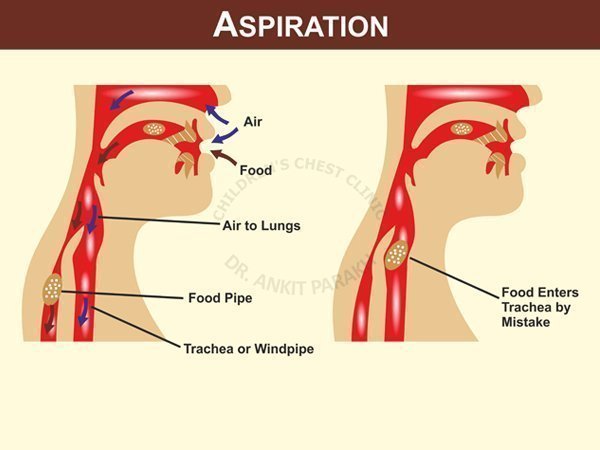
Studies for Evaluation of Aspiration in Children
What is Aspiration?
Aspiration occurs when food, liquids, saliva, or gastric contents enter the airway instead of the esophagus. Aspiration is commonly seen in children with neurological problems like cerebral palsy, neurodegenerative disorders, neuromuscular disorders, etc. Symptoms of aspiration include coughing/choking during feeding, recurrent pneumonia, wheezing, or unexplained weight loss.
Diagnostic Modalities for Evaluating Aspiration
- Video Fluoroscopic Evaluation of Swallow (VFES)
- What It Is: VFES, also known as a modified barium swallow study, is an X-ray procedure that assesses the swallowing process in real time.
- How It Works: The child is given food and liquids of different consistencies mixed with a contrast agent (barium). Initially foods of thinner consistencies are given and later foods of thicker viscosities are given as tolerated. The typical protocol utilizes thin liquid (milk), thick liquid (thick juice), puree, and solid. X-ray imaging tracks the movement of the bolus through the mouth, pharynx, and esophagus.
- Advantages:
- Provides detailed visualization of oral, pharyngeal, and upper esophageal phases.
- Identifies penetration, aspiration, and any anatomical abnormalities.
- Limitations:
- Exposure to radiation.
- Exposure to radiation.
2. Fiberoptic Endoscopic Evaluation of Swallowing (FEES)
- What It Is: FEES involves the use of a flexible fiberoptic scope to visualize the pharynx and larynx during swallowing.
- How It Works: A small scope is passed through the nostril to observe swallowing directly. The child is seated in a functional feeding position and are offered a variety of food consistencies as in a VFSS but without Barium. Coloured food or liquids are often used for better visualization. The study is seen live and recorded.
- Advantages:
- No radiation exposure.
- Can be performed bedside or in outpatient settings.
- Provides detailed views of laryngeal function and residue.
- Limitations:
- May cause discomfort or anxiety.
- Limited to pharyngeal phase evaluation.
3. Additional Diagnostic Tests
Choosing the Right Test
The choice between VFES and FEES depends on the child’s symptoms, age, and ability to cooperate. VFES is often preferred for a comprehensive assessment of all swallowing phases, while FEES is ideal for detailed visualization of the pharyngeal phase and laryngeal structures.
Evaluating aspiration in children requires a tailored approach to ensure accurate diagnosis and effective treatment. Both Video Fluoroscopic Evaluation of Swallow and Fiberoptic Endoscopic Evaluation of Swallowing (FEES) are invaluable tools in this process, offering insights that guide management and improve outcomes.
Conclusion
Aspiration studies at BLK MAX Hospital
Facilities for performing VideoFluoroscopic Evaluation of Swallow (VFES) and Fiberoptic Endoscopic Evaluation of Swallowing (FEES) are available at BLK MAX Hospital.
Frequently Asked Questions (FAQs)
1. What are the common symptoms of aspiration in children?
Symptoms include coughing or choking during meals, recurrent respiratory infections, wheezing, and failure to thrive.
2. How is Video Fluoroscopic Evaluation of Swallow (VFES) performed?
VFES involves giving the child barium-mixed food and liquids while X-rays capture real-time images of the swallowing process.
3. What makes FEES different from VFES?
FEES uses a fiberoptic scope to visualize swallowing without radiation exposure, focusing on the pharyngeal phase and laryngeal function.
4. Are there any risks associated with these tests?
VFES involves radiation exposure, while FEES may cause mild discomfort or anxiety during scope insertion.
5. Can aspiration be treated effectively?
Yes, with appropriate dietary changes, therapy, and sometimes medical or surgical interventions, most children improve significantly.



